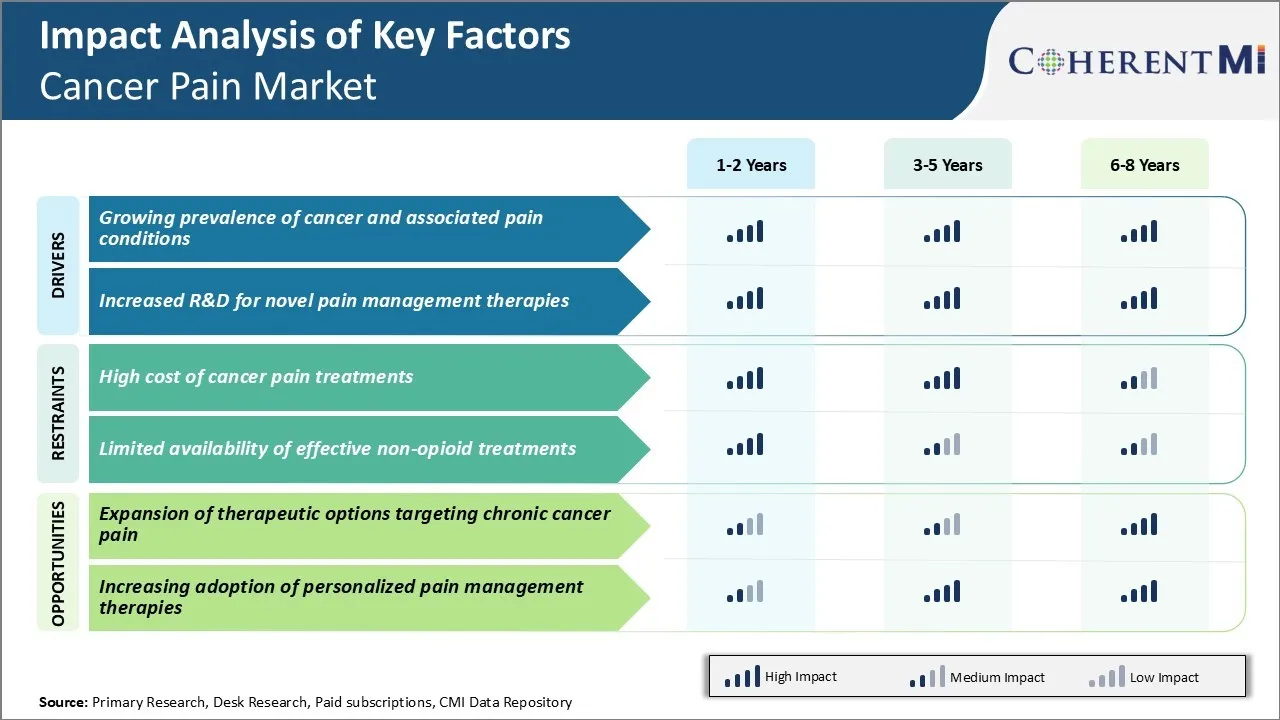Cancer Pain Market Trends
Market Driver - Growing Prevalence of Cancer and Associated Pain Conditions
As the incidence of cancer continues to rise worldwide, so too does the burden of cancer pain. Cancer pain arises due to the direct damage caused by the primary tumor or metastases, as well as from diagnostic procedures and therapies employed to treat the disease.
The World Health Organization estimates that around 1 in 3 cancer patients experiences chronic pain, which can greatly diminish quality of life and interfere with daily activities if not properly managed.
Certain types of cancer are also more strongly linked with pain than others. For instance, bone metastases are a common cause of severe pain in patients with advanced breast or prostate cancers. Likewise, cancers of the pancreas, lung, or colon regularly invade surrounding tissues at advanced stages to cause localized or referred pain.
Furthermore, aging organs and tissues may be less responsive to standard pain therapies compared to younger patients. An increasing emphasis on palliative care also aims to maximize quality of remaining life for elderly or terminally ill cancer patients. All of these demographic trends collectively point towards a growing prevalence of cancer pain in the coming years that will amplify demand for more effective management options.
Market Driver - Increased R&D for Novel Pain Management Therapies
Pharmaceutical companies and biotech startups recognize the commercial potential for novel technologies that can safely and reliably control cancer pain with minimal down time. Additional incentives also come from regulatory programs supporting development of treatments for vulnerable patient populations with high unmet medical need.
Promising new approaches under investigation aim to block specific pain signaling pathways or alter how the nervous system perceives and processes painful stimuli. Areas of focus include voltage-gated sodium channel blockers, N-methyl-D-aspartate receptor antagonists, selective serotonin-norepinephrine reuptake inhibitors, neurokinin receptor antagonists, cannabinoids, and gene therapies.
Combination therapies tailored for individual cancer types or genotypes may offer synergistic effects with improved tolerability over existing options like opioids. Alternative modalities such as cryoneuroablation, pulsed radiofrequency treatment, and spinal cord stimulation also seek to provide durable local pain relief.
Should ongoing studies demonstrate meaningful advantages over current standards of care, lucrative product approvals and labeling could convert research momentum into substantial commercial wins. This would help offset risky investment outlays in an area lacking major breakthroughs over the past decade.
Overall, the possibility of developing more effective “precision pain medicine” helps attract dedicated research involvement towards solving the urgent unmet needs tied to cancer pain.

Market Challenge - High Cost of Cancer Pain Treatments
One of the major challenges faced by the cancer pain market is the high cost associated with various pain treatment options. Cancer pain management often requires the use of powerful opioid analgesics such as morphine, fentanyl, and oxycodone, which are usually prescribed in high doses for an extended period of time until the pain is managed.
However, these drugs come with a hefty price tag, making the overall cost of pain relief a significant financial burden, especially for patients who don't have adequate health insurance coverage. Additionally, newer targeted therapies such as monoclonal antibodies and immune checkpoint inhibitors that are being increasingly used to treat cancer also have prohibitive price points.
As a result, many patients struggle to afford an optimal pain management regimen, which can considerably impact their quality of life. Healthcare providers and insurers are also reluctant to cover the full costs of long-term cancer pain treatments. This presents a major challenge for broader acceptance and uptake of even effective therapies.
Unaffordability often leads to undertreatment of pain or non-adherence to prescribed regimens, diminishing overall clinical outcomes. Addressing the financial challenges will be crucial for improving access to pain relief and ensuring more patients can benefit from available treatment options.
Market Opportunity - Expansion of Therapeutic Options Targeting Chronic Cancer Pain
One of the key opportunities in the cancer pain market lies in further expanding the range of therapeutic options available to effectively manage chronic cancer pain. While opioids continue to be the mainstay of treatment, their side effects and issues with long-term usage have driven research into alternative approaches.
There is promising ongoing work in developing newer pain medications that target specific pain pathways with improved safety profiles over opioids. Novel drug delivery technologies are also being investigated to ensure steady levels of drugs with reduced systemic side effects.
Non-pharmacological approaches including nerve blocks, neurostimulation devices, and psychological therapies are emerging as valuable adjuncts to drugs. Integrating these diverse options into a multimodal framework presents an opportunity to gain better chronic pain control while limiting reliance on opioids.
This could further enhance patients' quality of life and functionality. The evolving treatment landscape makes the cancer pain market primed for growth if these innovative therapies receive regulatory approvals and market acceptance.